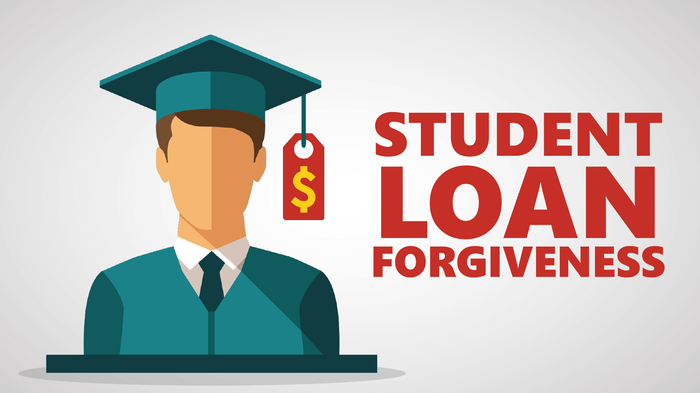According to multiple sources including The Washington Post, Americans families are carrying a total of $1.6 trillion in student loan debt. If you are wondering why collegiate education still isn’t free in America, look no further than dollar numbers that start with the letter “t.” Student loan debt is big business, so a massive change in the United States economy must be approached with caution. If you are looking for tips on how to reduce your student loan debt in the near future, you might want to check out a recent Golden Financial Services blog here.
Presidential hopeful Bernie Sanders plans to tax Wall Street over a 10-year span in order to forgive student loan debt for over 45 million affected Americans. Regardless of which side of the debate to choose, the basic question is: “What would this do to the nation’s economy?” Some answers below:
Forgiving Current Debt Doesn’t Keep Debt from Forming
While total debt forgiveness on current loans would stimulate the economy in the immediate since private income funds would be focused elsewhere, the New York Times points out an interesting dynamic about student loan debt: “…most student loan debt isn’t taken out to attend undergraduate programs at public colleges and universities.
Most loans are used for private colleges, for-profit colleges and, most of all, graduate school. According to the Department of Education, only 45 percent of student loans are used to attend public colleges and universities, presumably because tuition at those schools is already lower than in the private sector. The department also reports that 40 percent of loans are taken out to attend graduate or professional school — for example, master’s and Ph.D. programs, law school, business school and medical school.
Marriages and Family Formation Might Skyrocket
In a study by SpringerLink, a $1,000 increase in student loan debt lowered the odds of marriage by 2 percent a month among female bachelor’s degree recipients in the first four years after graduation. As weddings can easily cost $10,000 or more, millennials are instead choosing domestic partnerships and living together without the official title or marriage, and the tax relief of a marriage simply doesn’t come close to being a significant incentive for tying the knot.
Research has shown that marriage confers myriad economic benefits: For starters, married people, particularly men, tend to earn more. And children raised in two-parent households tend to be better off as adults. (WP)

Yes, Even the Housing Market is Affected
While the correlation between young adults with student loan debts and the lack of this age group purchasing homes should be obvious (as mentioned above, there are 45 million Americans still making student loan payments), this topic is still hotly debated in political circles. Despite the evidence from the Federal Reserve, some are still in denial. The housing market is absolutely an extremely complicated equation, but the Wall Street Journal puts it this way:
“(The Fed Reserve Study) showed that student debt is linked to key life decisions for some—including whether to buy a home and where to live. Homeownership among people ages 24 to 32 fell 9 percentage points, to 36% from 45%, between 2005 and 2014, the Fed said. While many factors affected the homeowner rate, the Fed said 2 percentage points, or about a fifth, of the decline was tied directly to student debt. That translated into 400,000 borrowers who could have owned a home by 2014 but didn’t because of student loans.”
Part of Sanders’ proposed plan for student loan forgiveness includes a section on the housing market, and how by simply forgiving debt, the market will be stimulated. Just how much of an increase the housing market will see has not been determined, since total student loan forgiveness is unprecedented.
The Wealthiest 2 Percent Will Foot the Bill Under Warren’s Plan
Under Elizabeth Warren’s plan to forgive only half of the total student loan debt, about 75,000 families in America that make over $50 million per year would be responsible for the additional tax payment to cover college education. Forbes’ article on the topic is decidedly more negative about the plan in general, but points out how this tactic may only be a temporary plug in the dam, and how it may end up causing a metaphorical flood of additional problems.
More from Forbes: “With Warren’s plan, households with an income under $100,000 would have up to $50,000 in student loan debt forgiven, but forgiveness would be phased out for households who earn between $100,000 and $250,000. Finally, households with incomes higher than $250,000 will have no loans forgiven. Due to the way this plan is set up, a family with two doctors and top tier earnings would be left to fend for themselves. This is despite the fact they probably spent 8+ years in school so they could learn to save people’s lives.”
Clearly there are strings attached to this plan. Are you for student loan debt forgiveness, or against it? Comment on our Facebook page and let us know!Here at Golden Financial Services we will continue to cover the details of the proposed Student Loan forgiveness debate, so make sure to stay locked on our blog!


